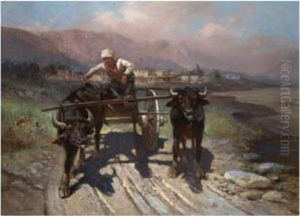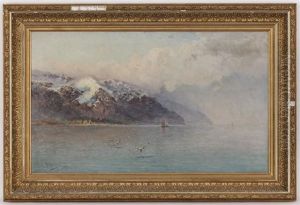Vladislav Karlovich Stakhovsky Paintings
Vladislav Karlovich Stakhovsky was a Ukrainian and Soviet painter, graphic artist, and art teacher. Born on November 13, 1879, in the city of Yelisavetgrad, which is now known as Kropyvnytskyi in Ukraine, Stakhovsky developed an interest in art at an early age. His formative years were spent under the Russian Empire, and his career continued through the turbulent times of the Russian Revolution, World War II, and into the Soviet era.
Stakhovsky received his primary art education at the Moscow School of Painting, Sculpture and Architecture, where he was influenced by the prevailing realist traditions. He was also exposed to the burgeoning modernist movements, which would later inform his own artistic style. His education was complemented with studies at the Imperial Academy of Arts in Saint Petersburg, where he honed his skills and developed a deeper understanding of artistic theory and practice.
Throughout his career, Stakhovsky was known for his landscapes, portraits, and still lifes. His style evolved over the years, reflecting the changes in artistic movements of the early 20th century. He was adept at capturing the mood of his subject matter, often using color and composition to evoke emotion. Despite the political upheavals of his time, he managed to maintain a focus on his art, rather than on overt political themes, which allowed his work to transcend the ideological confines of the era.
In addition to his work as an artist, Stakhovsky was a dedicated educator. He taught at various institutions, sharing his knowledge and passion for art with several generations of students. His influence extended beyond his own works, as he played a role in shaping the artistic sensibilities of numerous young artists who would go on to contribute to the cultural fabric of the Soviet Union.
Vladislav Karlovich Stakhovsky's contributions to the art world were recognized in his lifetime, and he was awarded the title of Honored Artist of the RSFSR. He continued to paint and teach until his later years, leaving behind a rich legacy of artwork and inspired students.
Stakhovsky passed away on September 5, 1974, in Moscow. His works are part of collections in various museums and galleries in Ukraine, Russia, and beyond, testament to his enduring impact on the art world. His life's work offers insight into the evolution of Soviet art and encapsulates a period of great change and resilience in the face of historical upheavals.


